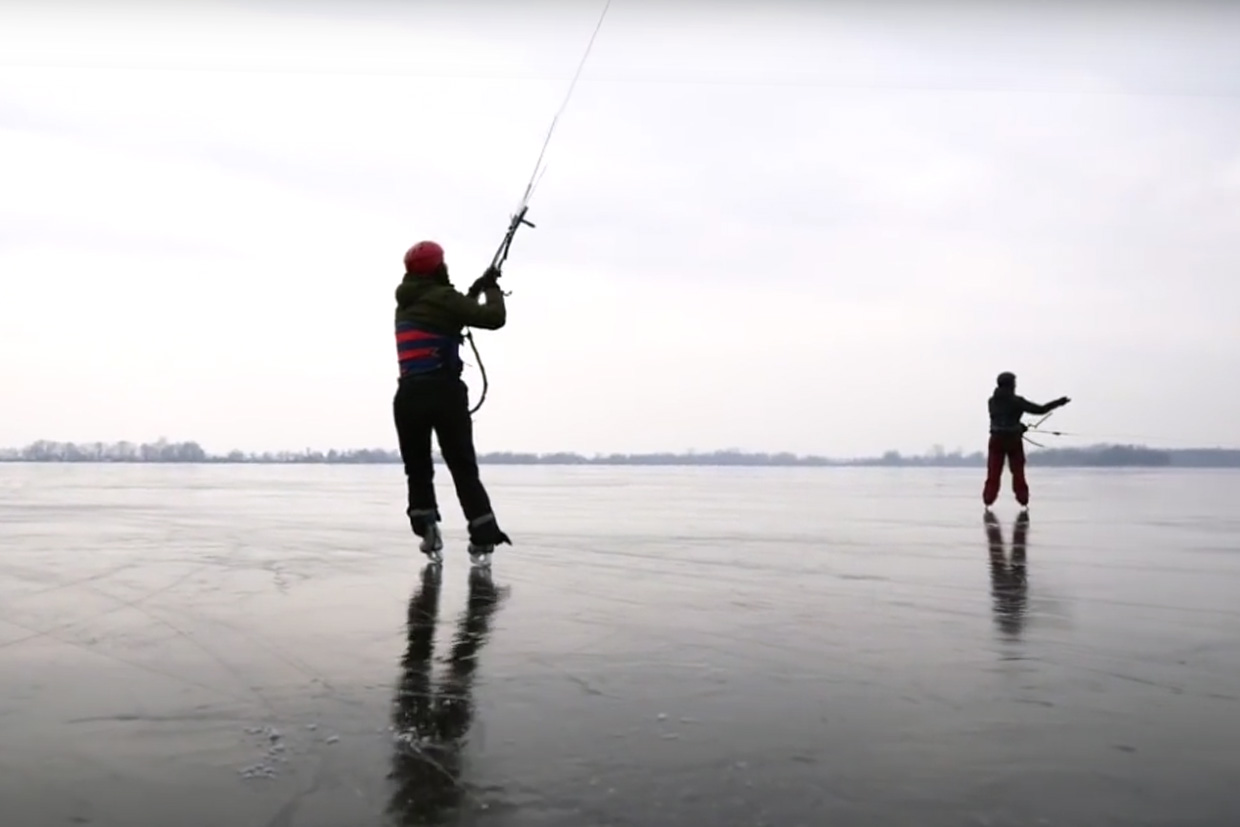Ice kiting is a kite sport that really belongs in the winter. It is as little as possible that it is truly unique when it comes from. It's like snow and snowkiting. As soon as there is ice, there is a group of kite surfers who immediately start itching. Ice skaters ... Often they are kite surfers who also love winter sports and ice skating. To be able to ice kite, the ice must be thick enough. There is talk of a minimum of 10 centimeters. So make sure you skate from the fat and sharpened as soon as the ice grows. Also read this ice kiting explanation for the latest tips and hacks before you go on the ice.
Table of contents
Ice kiting explanation
Type of skating
Ice kiting is one of the kite sports that we are passionate about. It is possible with your kitesurf kite in combination with speed skates, figure skates and / or ice hockey skates. It just depends on which skates you are comfortable with. Of course, Norwegians are a bit less playful than ice hockey skates, but that shouldn't spoil the fun.
Foilkite or tube kite
Ice kite surfing can be done with a foil kite as with a tube kite. So just with your kitesurf kite is no problem. Of course you do not have to start water with ice kiting, so a tube kite that floats is not necessary.
… Or make ice with a wing
Going on the ice with a wing is of course also possible and is even less complicated than with a kite. This is also called ice winging and ice wing surfing.
Raising and lowering the kite on the ice
Preferably, you can fix your tube kite on ice with help. Advanced students may do it in reverse. The so-called 'reverse launch'. It goes without saying that every kite on ice slides directly with the wind. That is why you work together with your buddy or you have something heavy so that the kite does not blow away. A sandbag for example.
Surf / wave type tube kite
A surf/wave type kite is best suited for ice kiting. Precisely because a typical surf / wave kite can easily disempower you (depower). This way you can almost completely disempower a surf / wave kite if you get too much speed and prevent you from going faster and faster.
Size kite ice kiting
In addition, you need less wind. First of all, because you don't have to be pulled out of the water. Secondly, because you have less resistance with ice kiting than with kite surfing. You therefore have a smaller one size kite than you are used to. A rule of thumb for choosing the right size kite ice kiting in stronger winds? That is your normal size with which you would go kite surfing with the same wind divided by two or even smaller. Don't overestimate yourself by flying a kite that is too big. You have more fun with a smaller kite on the ice. When the wind blows harder, even a small foil kite, for example a trainer kite, can generate enough power.
Helmet on
Water is hard, the ground is even harder, but ice is really hard. Nobody disputes this. That is why you wear a helmet with ice kiting as standard. If necessary, you can use extra protection such as knee protectors and wrist protectors.
Beware of snow 'the white sloper'
Snow heaps are out of the question for ice kiting. You can easily go fast on the ice and every pile of snow is a danger in itself. You get it. Once with your skates stuck in a pile of snow, you brake very hard and / or you are launched forward. Don't underestimate this. This is also another reason to put on a helmet.
Pay attention to your lines
Avoid broken or badly damaged lines. So pay close attention when extending your lines and when your kite is lowered. Skaters, including you, will skate the lines with ease.
Where ice kiting: choose your spot carefully
Safe out, safe at home. Do you remember. That is why this ice kiting explanation. You don't do ice kiting every day, which is why you keep extra safety margins. Therefore, choose your spot very carefully. The more space the better. Make sure there are no obstacles downwind that you could collide with. So not too close to the shore, on viaducts and / or in the track of skaters. Even every pole or trash can on the bank is already a risk if your kite flies downwind above the bank while you are on the ice. Where ice kiting? Preferably take the space on a large ice sheet. There, most skaters often skate in a fixed track, there is still enough space left for ice kite surfing. See the example of the Loosdrechtse Plassen in the video above. There are countless places where you can ice kite well. There, most skaters often skate in a fixed track, there is still enough space left for ice kite surfing.
Ice prediction Netherlands
View wind and weather links to keep an eye on the current and expected wind forecast. There are also special sites and apps that indicate where the ice is thick enough to go on. For example the website dachshund, skating card or the ice masters app. Read via nos.nl how Erik Ekkel keeps track of his ice thickness map.
Professional ice surfing
Did you know that there was a Dutch ice surfing championship in 2012? Yes so… The Dutch champion was Icesurfing Dennis Little. At the time there was quite a race to make the best ice surfer for ice windsurfing. Would a Dutch ice kiting championship be an option? Who knows may say…
Latest ice kiting blogs and news stories
- Kitesurfing February: this awaits you
 In this kitesurfing blog kitesurfing February we do not discuss kitesurfing holidays. No, we hope to give you insight into what awaits you if you continue 'kite sports' in the Netherlands. We mention a few options in addition to kitesurfing itself: snow kiting, ice kiting and ice swinging. The forecast for freezing cold or snow for the next 14 days is small but cold... Read more Kitesurfing February: this awaits you
In this kitesurfing blog kitesurfing February we do not discuss kitesurfing holidays. No, we hope to give you insight into what awaits you if you continue 'kite sports' in the Netherlands. We mention a few options in addition to kitesurfing itself: snow kiting, ice kiting and ice swinging. The forecast for freezing cold or snow for the next 14 days is small but cold... Read more Kitesurfing February: this awaits you - Ice kiting, ice surfing or ice wing surfing? Tips ice kite surfing
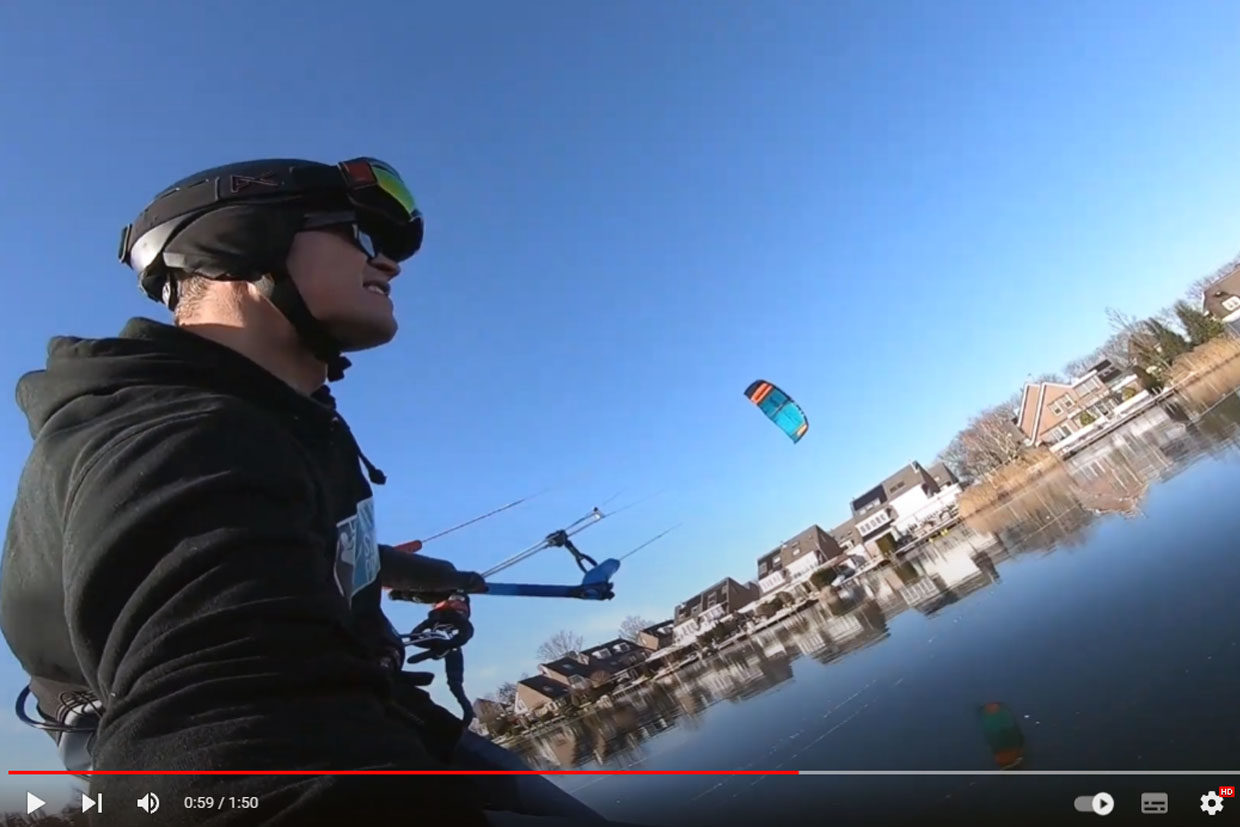 Do we have to pinch you before you realize it's really that time again. We can currently enjoy ice kiting and ice winging in the Netherlands again. Vrieskou has taken possession of the Netherlands and that means ice surfing, ice kiting, or ice wing surfing. A kiteblog about some unusual kite sports. You can also click directly to the ice kiting… Read more Ice kiting, ice surfing or ice wing surfing? Tips ice kite surfing
Do we have to pinch you before you realize it's really that time again. We can currently enjoy ice kiting and ice winging in the Netherlands again. Vrieskou has taken possession of the Netherlands and that means ice surfing, ice kiting, or ice wing surfing. A kiteblog about some unusual kite sports. You can also click directly to the ice kiting… Read more Ice kiting, ice surfing or ice wing surfing? Tips ice kite surfing - Ode to the wing
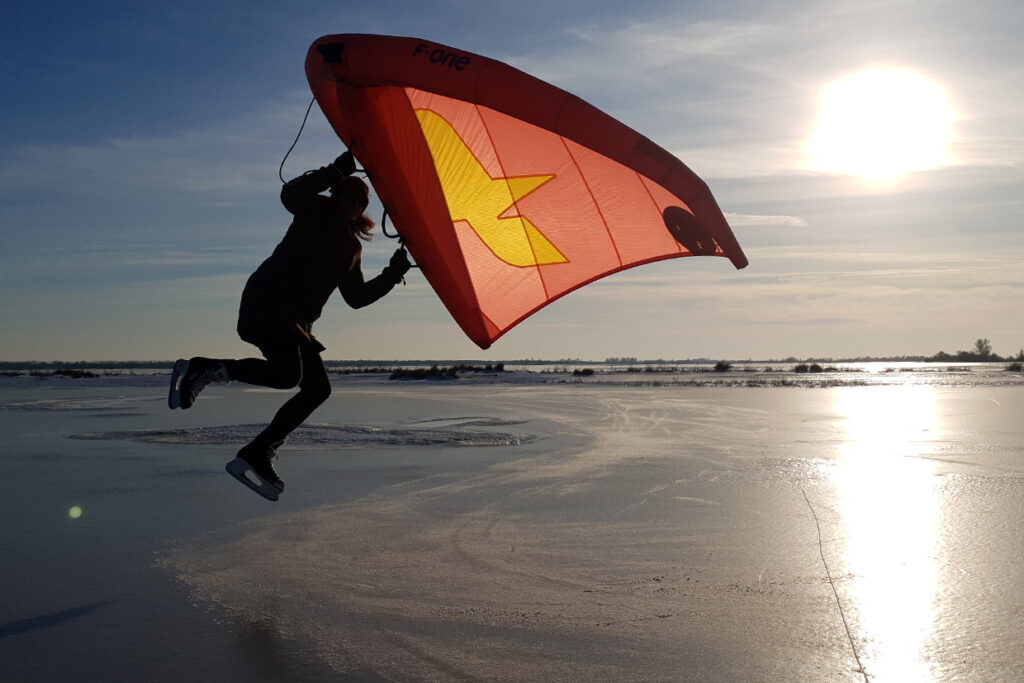 February 2021 is already a month to remember. No winter sports, no kitesurfing holidays, no Red Bull King of the Air ... And then suddenly a layer of snow followed by beautiful ice with wind. We really enjoyed the ice kiting and skating. In addition, we really enjoyed all ... Read more Ode to the wing
February 2021 is already a month to remember. No winter sports, no kitesurfing holidays, no Red Bull King of the Air ... And then suddenly a layer of snow followed by beautiful ice with wind. We really enjoyed the ice kiting and skating. In addition, we really enjoyed all ... Read more Ode to the wing - Ice kiting session on the Waal. Nice videos
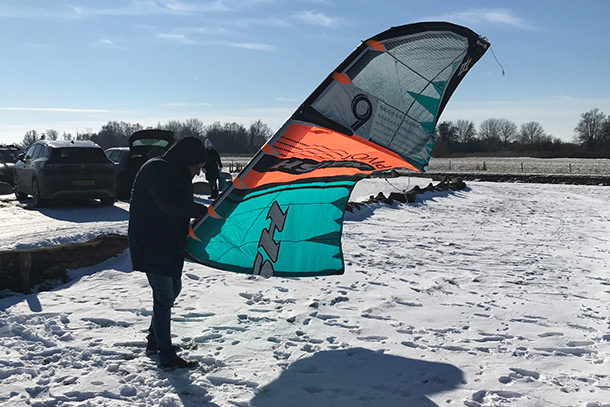 Around 18 knots of wind, a sun and ice. Beautiful right? After having had ice fun with the kids it was time for ice kiting. First selected a suitable location in the neighborhood. Checked again on location whether it was really suitable and then I was ready. Skating underneath, helmet on, 6 meters ... Read more Ice kiting session on the Waal. Nice videos
Around 18 knots of wind, a sun and ice. Beautiful right? After having had ice fun with the kids it was time for ice kiting. First selected a suitable location in the neighborhood. Checked again on location whether it was really suitable and then I was ready. Skating underneath, helmet on, 6 meters ... Read more Ice kiting session on the Waal. Nice videos - Ice wing surfing or ice winging: video and photos floating ice surfing
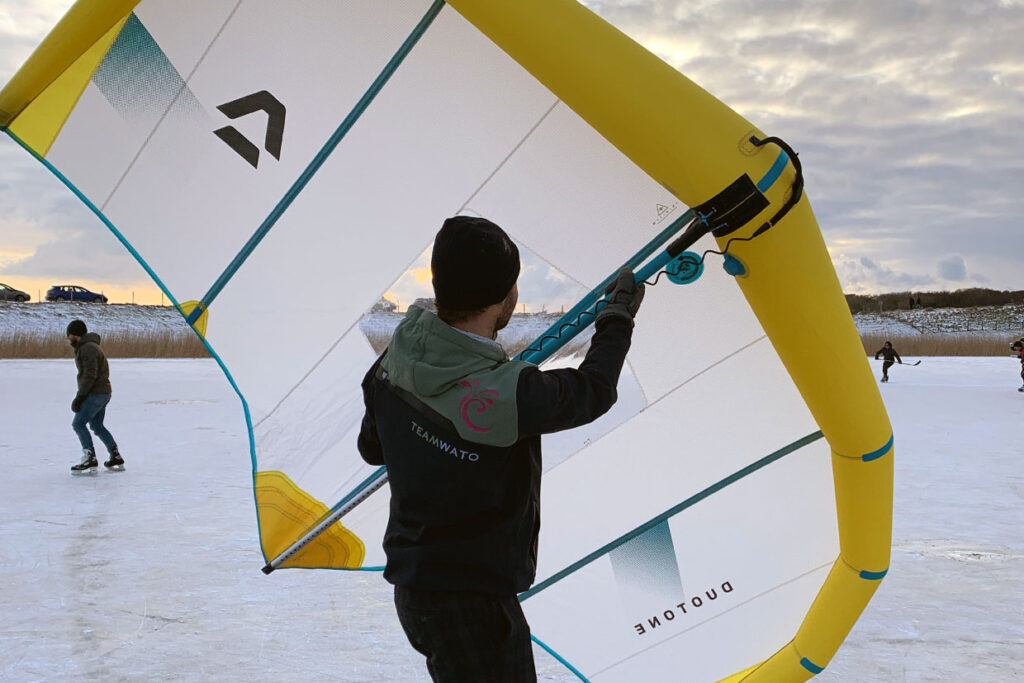 There are kite surfers who have managed to get hold of snow kiting and ice kiting and also a wing. We even see kite surfers who are currently purchasing a wing especially for ice wing surfing. We also see that some kitesurf shops now offer them at a nice discount. Wing foiling broke through last summer. It's a new ... Read more Ice wing surfing or ice winging: video and photos floating ice surfing
There are kite surfers who have managed to get hold of snow kiting and ice kiting and also a wing. We even see kite surfers who are currently purchasing a wing especially for ice wing surfing. We also see that some kitesurf shops now offer them at a nice discount. Wing foiling broke through last summer. It's a new ... Read more Ice wing surfing or ice winging: video and photos floating ice surfing


